|
|
|
Greetings to all readers,
Early May always seems like a moment of respite in the sake-brewing year. All but a few brewers have wrapped things up for the brewing season. For a brief moment, the brewing world can wipe its collective brow, and rest.
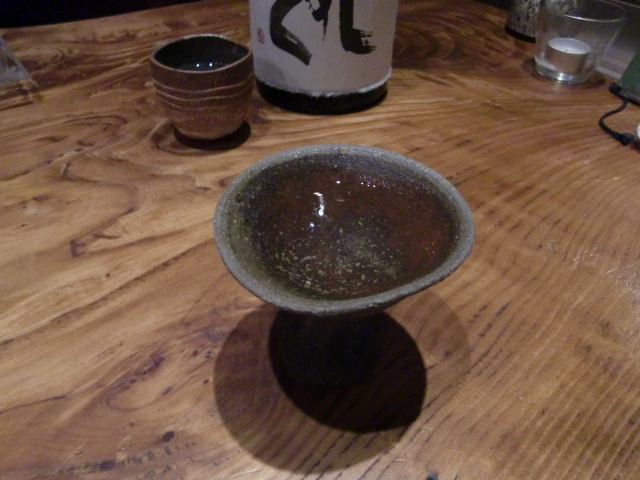 |
|
There are plenty of tastings touting “shinshu,” or new sake, that lets us see just how things went this past year. And in just a few days, the results of the most prestigious event in the brewing year, the National New Sake Tasting Competition, will be announced. This year marks the 100th running of that event. At the end of the month, there will be a day on which the industry will have a day to taste all 1000 or so entries.
This month, we look at how new rice varieties express themselves fully – or rather, are allowed to do so – after several years’ of use. We look, too and how the vibes in a kura supposedly affect sake quality, and a handful of interesting tidbits as well.
Please enjoy the newsletter, preferably with a glass of gently chilled shinshu…
Warm regards,
John
 
|
Give Things Time
New Sake Rice Types Included...
One of the best pieces of advice I received when first arriving in Japan
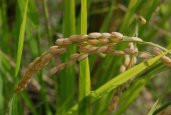 |
|
in 1988 was, “Give things time.” I cannot express how often this has proved invaluable in so many ways and areas of my life. Over and over and over I have heeded that advice, almost always with positive results. And lately, I have found it applies to new sake rice types as well.
Sake rice types and their relationship to flavor and quality is something about which tomes can be written. Yet it can be succinctly summed up as well: rice types are tied to flavor, but not as tightly as the grape-varietal-to-wine connection. And precisely because of that vagueness, I think it is a fascinating study.
There are currently just about a hundred different types of sake rice in use. Some come and go each year. A few simply fall out of use, perhaps due to lack of character or appeal, or maybe difficulty in growing. They might be confined to a small region, perhaps, and the growers there nudge it out of existence in favor of more profitable or in-demand varieties.
And new ones are developed and created each year as well, for a handful of reasons. That handful may include cost, creating a truly local variety, technical improvements, and even adapting to climate changes.
However, when new rice varieties come out, very often they are underwhelming in their expressions of flavor. The sake that results from them can tend to be too tight, with no meat on its bones. This is because the brewers are overly cautious when using a new rice type.
“We’re scaredy-cats at first,” explained one brewer, Shinichi Sei of Fujinishiki. “The one thing we do not want to do is mishandle a new rice so that it leads to big, heavy and rough flavors. We are all conservative at first, and would rather err on the side of being control freaks.”
That over-cautiousness is expressed most overtly in the first stages of rice handling: in particular, the washing and soaking stage. Just how quickly and thoroughly a rice will absorb water is hugely important in determining how it will dissolve in the fermenting tank, and that affects how meaty, beaty, big and bouncy the resulting sake will be. And just how fast and deeply rice absorbs water during washing and soaking varies according to countless things, including the year’s harvest, milling rate, time, temperature, climate – and of course, the rice variety. And the less experience a brewer has with a given rice variety, the harder it is to be the aforementioned control freak.
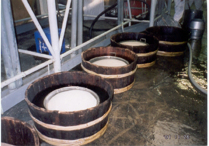 |
|
And so they are cautious, careful, conservative. At least at first, they are. Over time, they become experienced and comfortable working with a given new rice type, and they relax a bit. The mellow out. And their tolerance for erring the other way grows, as does the flavor, breadth and depth of sake resulting from new rice types. It fills out; it gets better.
I have seen this over and over, most recently with two sake rice types worth mentioning. One is Dewa no Sato from Yamagata. I recently had a bottle of a junmai ginjo called Tohko that had won the “Sake Enjoyed in a Wine Glass” competition. It was made with Dewa no Sato rice, which I have not been bowled-over with, to tell the truth.
But this was a wonderfully layered and complex brew. Of course, much or most of the props need to go to the toji (master brewer)! But at the same time, I am sure this could not have been done with Dewa no Sato rice ten years ago. I will surely be on the lookout for other producers’ Dewa no Sato sake from here on out.
Yet another was a Shizuoka rice called Homare Fuji. As an aside, its huge shimpaku (starch center) prevents it from being milled much beyond 60%, so it is very rare to see a ginjo class sake made from this particular rice. I have long thought it airy, light and clean, but devoid of pluck or gumption. Not that one needs pluck or gumption in one’s sake, I’m just sayin’…
But a month or so back I had Fujinishiki tokubetsu junmai, from Shizuoka. And I found it much deeper, full yet still balanced in flavor than in the past. And indeed, Shinichi Sei (quoted above) agreed. “Without a doubt, yes, we have been able to coax more flavor out of Homare Fuji the past year or so. You can expect more great things from this rice, and Shizuoka sake, in the coming years!”
I think I first noticed this concept about ten years ago with the
 |
|
Yamagata rice called Dewasansan. At first, it was heralded as the second coming of Yamada Nishiki, but I remained unimpressed. But all the brewers of Yamagata worked assiduously toward better sake on a myriad of fronts, and indeed, over several years, the sake made with Dewasansan slowly but surely became eminently more enjoyable. Another example is Sake Akita Komachi, a sake rice from Akita (duh) that, while not cheap, has exhibited its suitability toward daiginjo brewing within but a few years of coming into use. But this rice, too, is much better now than it was a few years back.
And so, should you see the sake mentioned here, or even more significantly any sake made with the rice types mentioned above, by all means try them. But even more importantly, if you come across a sake made with a sake rice hitherto not encountered and you find yourself underwhelmed, remember,
give things time.
|
|
Wajohryoushu 和醸良酒
“Wa-joh-ryou-shu” is an expression sometimes heard in the sake-brewing industry. As it is important to eschew hyperbole, let me state too that, in truth, it is not that commonly heard. It is not as if brewers wake up each morning and greet each other with a salute and a cheerful shout of, “Wajohryoushu!” Nah. Not even close. One rarely hears it, really, although we can see it form time to time in artistic calligraphic displays such as that in the photo seen here (taken at Ontario Spring Water Sake Company brewery in Toronto). But it actually is in play all the time, in the background. The concept itself is a part of the philosophy of all brewers.
What does it mean? The four characters mean, in order, “harmony,” “brew,” “good” and “sake.” Little needs to be added to that explanation! In other words, “brewing within an environment suffused in harmony leads to good sake.” While it rings romantically true, it seems to be real on a practical level as well.
Sake is not really brewed by people. Perish the thought! The toji and kurabito (brewmaster and brewing staff) just create a good environment for the micro-organisms like mold and yeast to do their thing, and then basically get out of their way. These micro-organisms are living things, and like all living things, they are least potentially affected by all that is going on around them. And like all of us, they thrive in particularly positive vibes.
So if folks are getting along in the brewery, the sake-creating micro-organism pick up on that and the sake ends up tasting better. Or so goes the thinking behind “Wajohryoushu.”
“Poppycock,” you say? Silliness? Nonsense? Superstition even? Perhaps. But don’t knock it till you’ve brewed it. Those that have been doing this for centuries, and in particular those that make the best stuff, insist it is so, and live by those four characters.
On a slight tangent, I am personally quite sure that the personality of a brewer is infused into the sake itself, if not always, at least very commonly. Loud brewers lead to pronounced flavors in sake, silent types brew subtle sake. Stoic brewers make staid sake, and flamboyant characters end up with lively sake. Would this stand up to scientific studies that call for measureable, reproducible and independently verifiable results? Not likely. Little in the sake world does. But that does not stop me from personally believing it. |
Sake Basics: Declining Sales
Sake production and consumption peaked in 1973, and has more or
less been in contraction since then, save but one or two years along the way that have seen increases. Why is this?
Certainly not due to quality. Sake has never been better. It just a matter of a lack of proper marketing, a lack of industry-wide cooperation, and other "distractions" for consumers. But last year, 2011, there was an increase in sake sales over the previous year. Sure, it was small, a scant 1.2% but it was the first increase in 16 full years. So we will take what we can get!
Some think it was a show of support for the ravaged Tohoku area, and in fact, some western regions saw declines in their sales as sales in the Tohoku area surged. But let us see how things unfold this year. So far, so good...
I personally do think this is the long-awaited start to a change in sake's fortunes, and that sales will slowy improve from here.
Let us all do our part! ;-)
|
Did You Know? Miscellaneous and Sundry...
Interested in brewing sake at home? Check out Brewing Sake: Release the Toji Within, by Will Auld. Learn more here, or just buy it here
Want to help support Tohoku, and learn about Tohoku cuisine? Nothing goes better with Tohoku sake! Check out Elizabeth Andoh's ebook “Kibo” to do both!
Fourteen months after, sake is testing 100% safe. Read about it here.
|
 Announcements and Events Announcements and Events
Sake Professional Course July 18 to 20, in Chicago, Illinois Sold Out! No Seats Remain!
The Sake Professional Course in Chicago in July filled up within two weeks. No seats remain, although I am accepting names for the waiting list, should there be any cancellations. The one after Chicago is scheduled for San Francisco in October. Please email me if you are interested in the San Fancisco course. The below is left here for reference.
The next Sake Professional Course will take place July 18 to 20, at the offices of Tenzing Wine and Spirits in downtown Chicago, Illinois. The Sake Professional Course, with Sake Education Council-recognized Certified Sake Professional certification testing, is by far the most intensive, immersing, comprehensive sake educational prog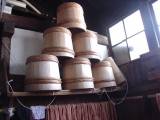 ram in existence. Three days of classroom lectures and tastings leave "no sake stone unturned." ram in existence. Three days of classroom lectures and tastings leave "no sake stone unturned."
The tuition for the course is $799. For more information about the daily schedule and to read a handful of testimonials, click here . Feel free to contact me directly at sakeguy@gol.com with any questions about the course, or to make a reservation. All marketing noise and shameless self-promotion aside, this course is already filling up quite fast. As such, interested parties should email me soon to make a reservation.
Sake Education Council Website
Please take a moment to check out the website for the Sake Education Council, the organization behind the Certified Sake Professional and Advanced Sake Professional certifications. We plan to grow steadily, strongly and continually, and we will need the support of all those that love sake to do so. Follow us through the "usual suspects" of social media.
Sake Homebrewer's Online Store
Please be sure to check out Homebrewsake.com for supplies, information and a forum, including lots of supporting information on everything from recipes to history. I have been meaning to mention this site and the gentleman behind it, Will Auld, but have repeatedly forgotten in past newsletters. The site is replete with instruction, augmented with videos, schedules, and more. If you are even remotely interested check this site out right away.
Don't forget the archives!
Older editions of this newsletter are archived here.
Really old editions are archived here.
|
 Sake Education Central Sake Education CentralSake Dictionary App for the iPhone, iPod and iPad
"For 99 cents, this app ROCKS!!"
-a satisfied customer
There you are, perusing a menu, or standing in front of a shelf of great sake, or perhaps reading a sake newsletter… and up pops one of those hairy, pesky sake terms in Japanese. You know you have heard it many times, but dammit, you just cannot remember what it means now…
No problem! Just whip out your iPhone or iPod and fire up your trusty old version of
The Sake Dictionary. In a matter of seconds, you’ll be amongst the cognoscenti once again. But… if only you could pronounce it properly. Now that would really rock!
Done! Just tap on the term and you will hear a clear example of how to pronounce the term in Japanese. Repeat it a couple of times and the term is yours for eternity, to toss about and impress your mates.
What’s more, it’s
less!
Less than what it cost before, much less. Like less than one-seventh less. For a limited time only, the audio-enhanced version of The Sake Dictionary iPhone app is available for a mere $0.99.
|
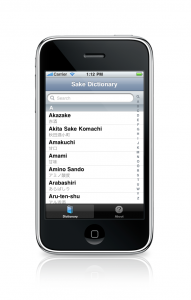 |
|
|
The Sake Dictionary is a concise little package of all the terms you might ever come across when dealing with sake. Almost 200 of them - including sake grades, rice variety names, seasonal sake terms, special varieties, rare types, post-brewing processing words and the myriad terms used in sake production - many of which are not even familiar to the average Japanese person on the street - are listed up here with concise, useful and clear definitions and the written Japanese version as well. And now, with the new audio component, you can listen and learn just how to pronounce those terms properly.
Start to toss around Japanese sake terms like you were raised knowing them! Gain a level of familiarity hitherto unimaginable! Avoid frustrating paralysis when faced with a sake-related purchase!
Get your copy of The Sake Dictionary now and never be confused by sake terms - or how to pronounce them - again.
Get it here: http://itunes.com/apps/sakedictionary
(Note if you have already purchased it, this upgrade to the audio version is free. Just go to iTunes and get it!)
|
Are you not getting this newsletter? I realize that is like asking that
"those not present please raise your hand," but for future reference, should you spontaneously stop receiving this newsletter, please go here and sign up again. Should that not work, please go to www.sake-world.com.
Email newsletter services are very careful not to be considered spam enablers, but the problem is that often very valid email addresses come back bounced as invalid. It is an unavoidable problem. So if you or someone you know is not getting this, or stop(s) receiving it inexplicably, please do take a moment to double check that you are still subscribed.
Sincere apologies for the hassle, mixed with gratitude for reading this newsletter. |
I hope you have found the above information helpful and entertaining. For more information about all things sake, please check out www.sake-world.com. Until next month, warm regards, and enjoy your sake. 
Questions and comments should be directed to John Gauntner, at this email address.
All material Copyright, John Gauntner & Sake World Inc.
Regards,
John Gauntner
Sake World, Inc
 . . 
|
|
